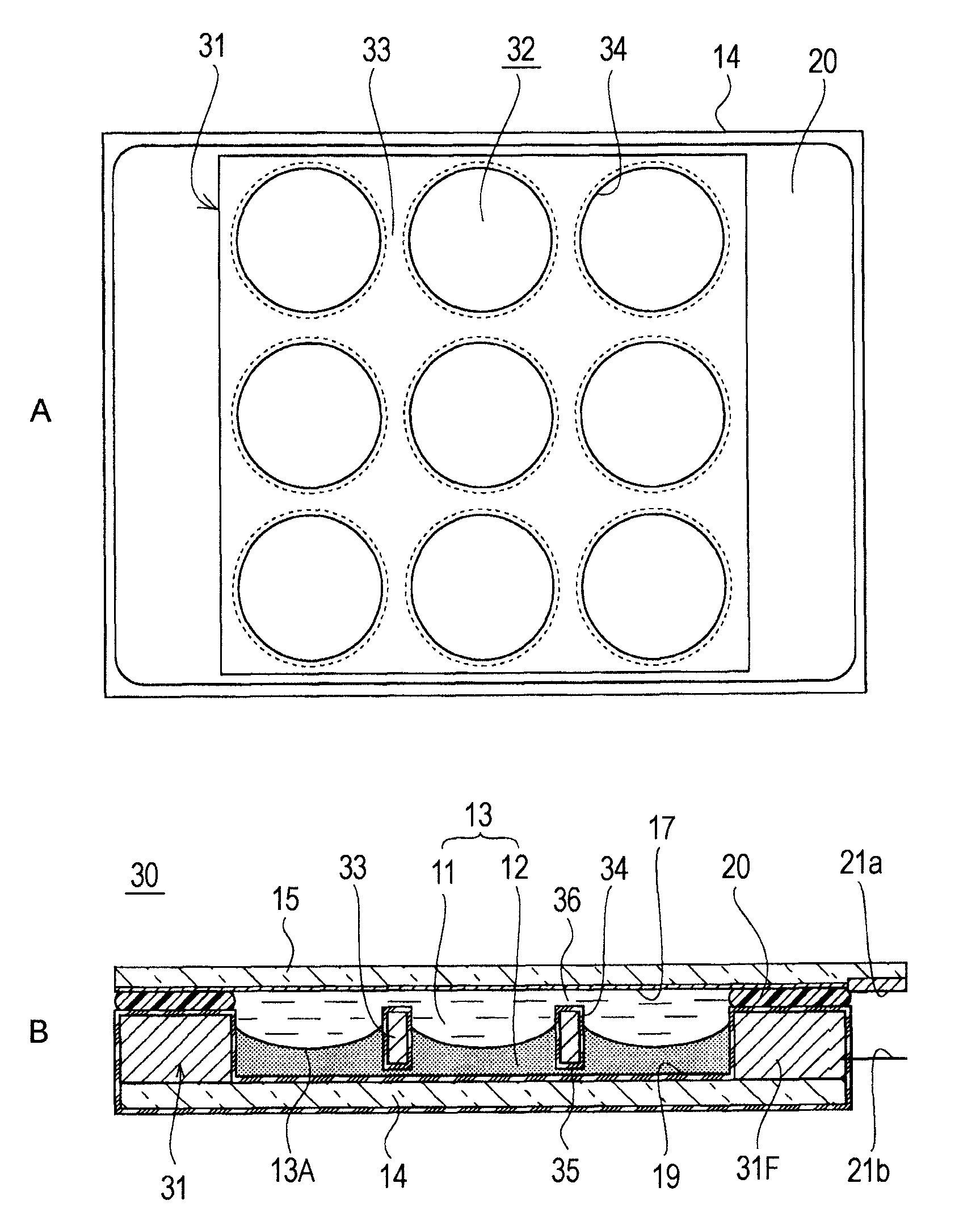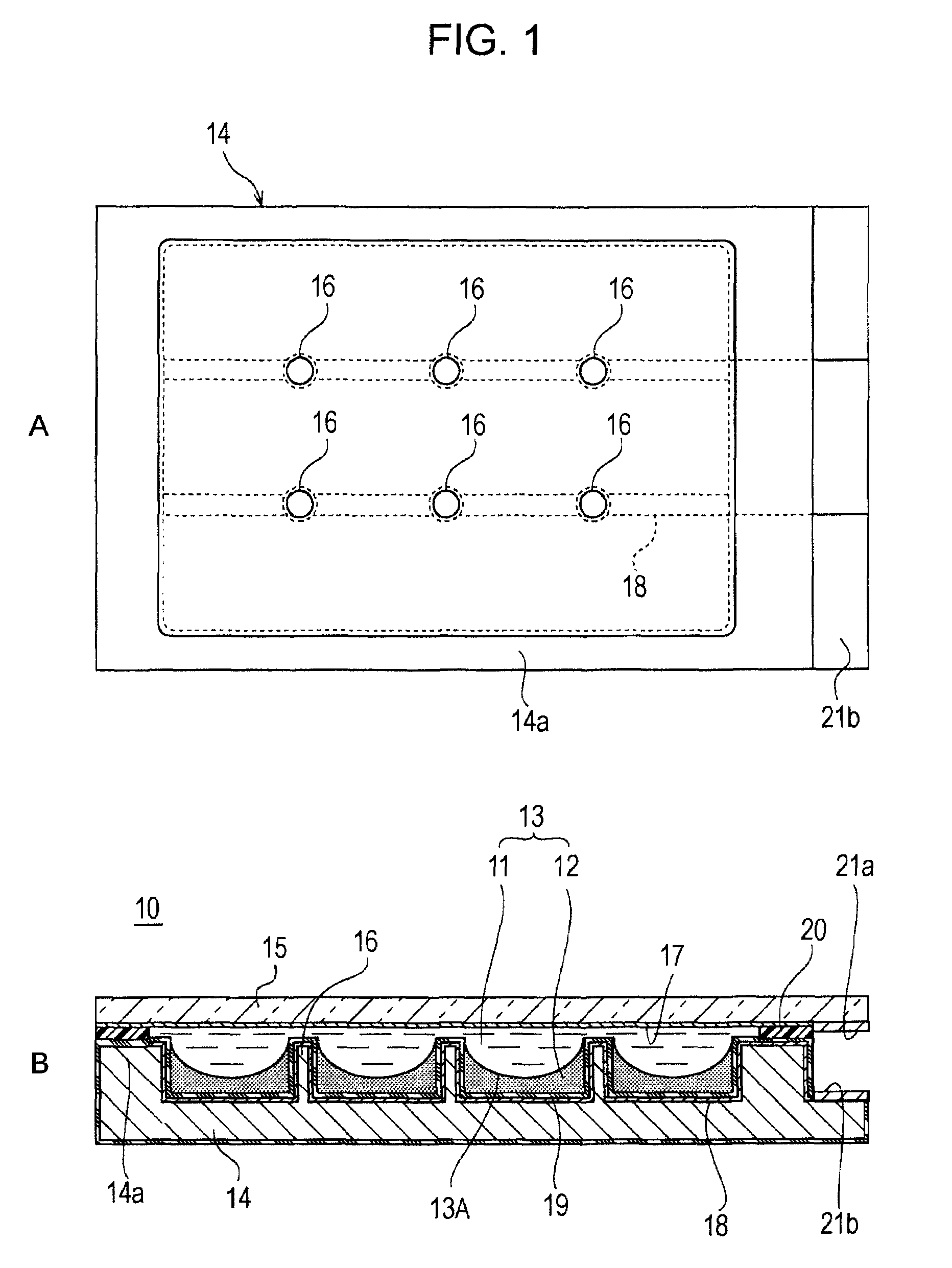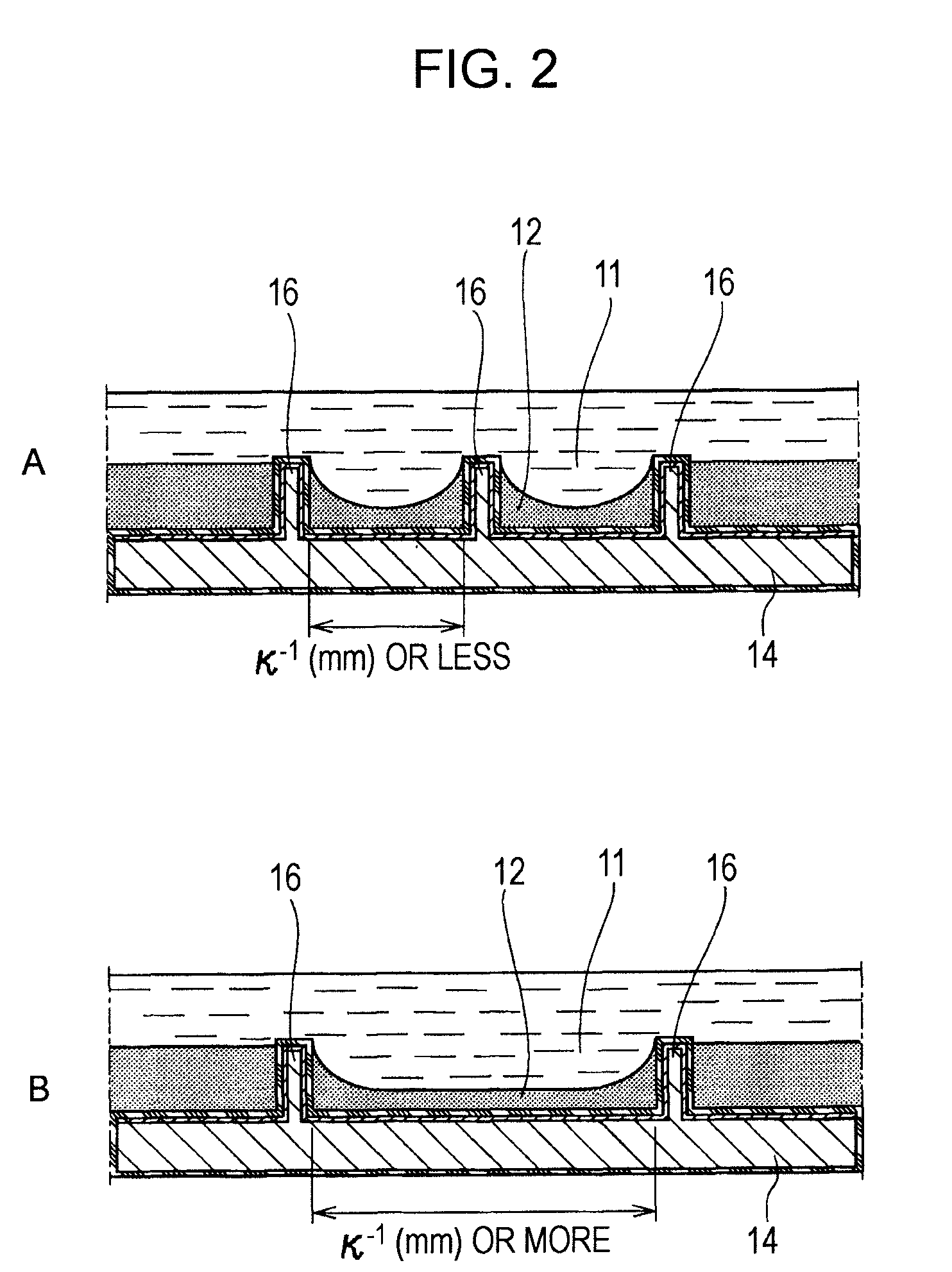Lens array
a technology of arrays and lenses, applied in the field of arrays, can solve the problems of non-uniformity of the characteristics of the lens elements, the difference in the supply amount between the cells, etc., and achieve the effect of uniformizing the characteristics of the lens
- Summary
- Abstract
- Description
- Claims
- Application Information
AI Technical Summary
Benefits of technology
Problems solved by technology
Method used
Image
Examples
first embodiment
[0040]Part A of FIG. 1 and part B of FIG. 1 show the schematic structure of a lens array 10 according to a first embodiment of the present invention. Part A of FIG. 1 is a plan view of a common substrate 14 included in the lens array 10, and part B of FIG. 1 is a sectional view of the main part of the lens array 10. The lens array 10 according to the present embodiment includes a plurality of lens elements 13 in which lens surfaces 13A are formed by interfaces between first liquid 11 that is conductive and second liquid 12 that is insulative. The lens array 10 is used in, for example, an illuminating optical system, and is structured as a varifocal lens which arbitrarily varies a focal length of light that passes through the lens array 10.
[0041]Transparent conductive liquid is used as the first liquid 11. For example, polar liquid such as water, electrolyte (aqueous solution of electrolyte such as potassium chloride, sodium chloride, and lithium chloride), alcohols, such as methyl a...
second embodiment
[0069]Part A of FIG. 5 and part B of FIG. 5 show a second embodiment of the present invention. The present embodiment differs from the above-described first embodiment in that the projections which section the areas in which individual lens elements are formed has a linear shape. Here, in the figure, components corresponding to those in the above-described first embodiment are denoted by the same reference numerals, and detailed explanations thereof are omitted.
[0070]Part A of FIG. 5 is a plan view of a common substrate 14 which forms a lens array, and shows an example in which linear projections 26 are arranged in a two-dimensional grid pattern so that twelve rectangular lens-element forming areas in total are sectioned along three rows and four columns between the projections 26 adjacent to each other. Passages 27 for allowing liquid communication between the adjacent lens elements are formed in the projections 26. Although the passages 27 are formed between the projections 26 tha...
third embodiment
[0073]Part A of FIG. 6 and part B of FIG. 6 show the schematic structure of a lens array 30 according to a third embodiment of the present invention. Part A of FIG. 6 is a plan view showing the inner structure of the lens array 30, and part B of FIG. 6 is a sectional view of the main part of the lens array 30. Here, in the figure, components corresponding to those in the above-described first embodiment are denoted by the same reference numerals, and detailed explanations thereof are omitted.
[0074]Similar to the above-described first embodiment, a plurality of lens elements 13 including first liquid 11 and second liquid 12 are two-dimensionally arranged in a liquid chamber that is formed between a common substrate 14 and a lid body 15. Here, in the present embodiment, the common substrate 14 is formed of a transparent plate member having a flat front surface and a flat back surface, similar to the lid body 15.
[0075]In the present embodiment, a perforated plate 31 is disposed between...
PUM
 Login to View More
Login to View More Abstract
Description
Claims
Application Information
 Login to View More
Login to View More - R&D
- Intellectual Property
- Life Sciences
- Materials
- Tech Scout
- Unparalleled Data Quality
- Higher Quality Content
- 60% Fewer Hallucinations
Browse by: Latest US Patents, China's latest patents, Technical Efficacy Thesaurus, Application Domain, Technology Topic, Popular Technical Reports.
© 2025 PatSnap. All rights reserved.Legal|Privacy policy|Modern Slavery Act Transparency Statement|Sitemap|About US| Contact US: help@patsnap.com



